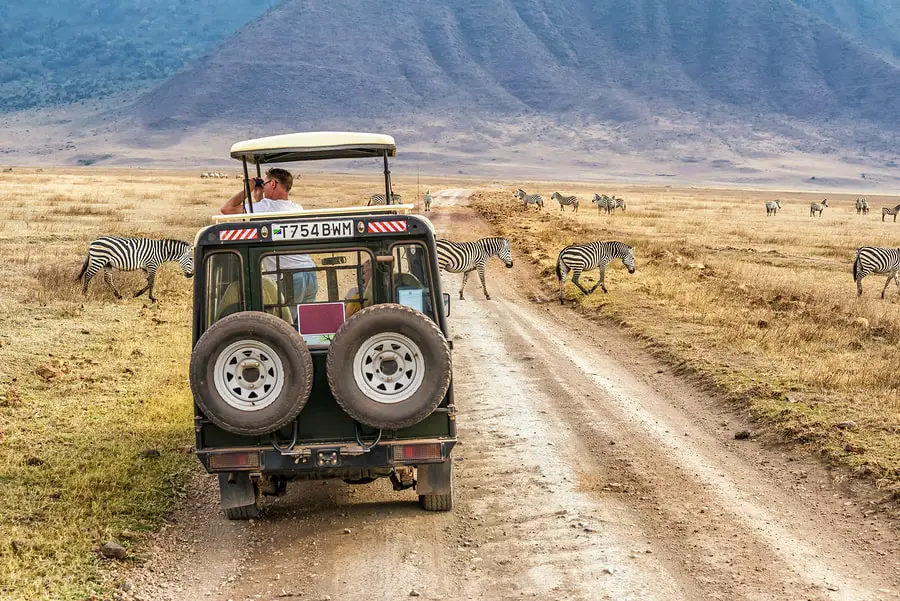Table of Contents
*This post may contain affiliate links. As an Amazon Associate we earn from qualifying purchases.
Man has built civilization and technology at a steady pace from the beginning of recorded history. But while these innovations are valuable in their own way, a great deal of importance is placed on keeping nature intact.
Part of this means preserving the natural habitats of animals, especially those that are hard to find. Lions, elephants, rhinos, and many other creatures are found in various African regions. Steps have been taken to protect these animals and preserve the natural landscapes they rely on for survival, comfort, and enjoyment.
African conservations are popular ways to shelter animals while simultaneously keeping their habitat intact. Conservations are sectioned-off areas where wildlife may roam, play, feed, and live out their lives in a comfortable environment safe from poachers, colonization, and other threats.
These conservations are sometimes structured in such a way that people can take tours, allowing them to see wildlife without forcing said wildlife into cages or cramped enclosures. These conservations can be popular recreational getaways and vacation spots, especially for those who enjoy being around nature and animals.
Why Were Animal Conservations Developed?
Anyone who is considering a visit to an African animal conservation has plenty of options to choose from. These locations can be found in various regions, as they’ve proven to be very valuable for protecting wildlife and ensuring nature is preserved rather than being changed radically to accommodate human civilization.
Animal conservations were originally developed to address the problem of hunters going after animals that are at risk of becoming endangered. Even those animals that are not currently listed as an endangered species by authorities on wildlife could be at risk for this fate if left out in the exposed wilderness.
These locations ensure animals have a safe and habitable place to roam. While there are plenty of zoos and animal exhibits around the world, conservations are a bit different. They give animals much more space, and focus on protecting their natural environment rather than forcing them into an enclosure where a simulated environment has been created.
Animals are at risk for becoming endangered because there are many uses for these creatures. Hunters and poachers will go after these rare animals, mainly because their short supply makes them highly valuable on underground markets. Conservations seek to remedy these issues and put animals in a safe spot where they won’t be pursued for profit.
Why Are African Animals Targeted?
Animals are a glorious sight to behold for many people, but they can also be a trophy for big-game hunters. Not only would many people jump at the chance to bag an animal like a rhino or elephant, but they would be quick to go after these animals for the monetary rewards they could provide.
For example, some poachers go after elephants for their tusks, or rhinos for their horns. An African rhino conservation or African elephant conservation can provide protected environments to ensure these creatures won’t be hunted down and killed so their bodies can be dismembered and sold for the rewards.
Even lions are at risk, as their fur is sometimes considered to be an exotic status symbol for wearers. An African lion conservation will usually have guards and cameras around the perimeter, ensuring the animals can roam freely within the conservation area and preventing criminals from breaking in to try and get them.
Animal conservations offer protection for wildlife, but they also provide other benefits. These locations can be great destinations for tourists, who want to see exotic animals but dislike the idea of the animals being locked away in a cramped zoo.
Conservations Show Animals in Their Natural State
Seeing animals is almost always an enlightening and exciting experience. Many people like to feel connected with nature, and being close to some of nature’s wildest beasts is usually a rare treat. While some people like seeing animals, the thought of zoos and tight enclosures can seem cruel at times.
Conservations are usually built to include areas for tourists or visitors. Sometimes these areas are directly outside of the animal sections, and sometimes the entire conservation is built so visitors can be taken through via secure paths and transport vehicles.
Conservations make for great vacation destinations for individuals, couples, and families alike. The chance to see animals is a great opportunity, but the ability to do so in a manner that doesn’t harm or inconvenience the animals adds some extra satisfaction to the equation.
Conservations have done a lot for the animal population, especially among those creatures that are rare and only present in some parts of the world. These locations allow people to view nature the way it was meant to be viewed – uninterrupted and unharmed by human intervention.

